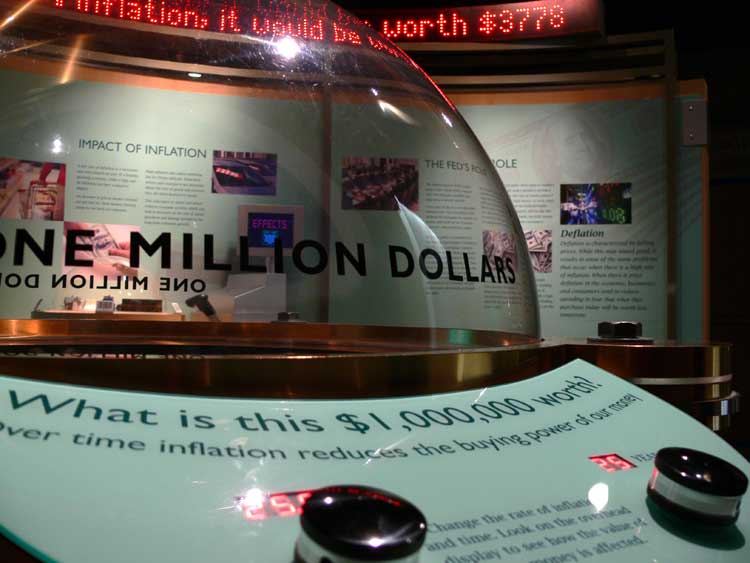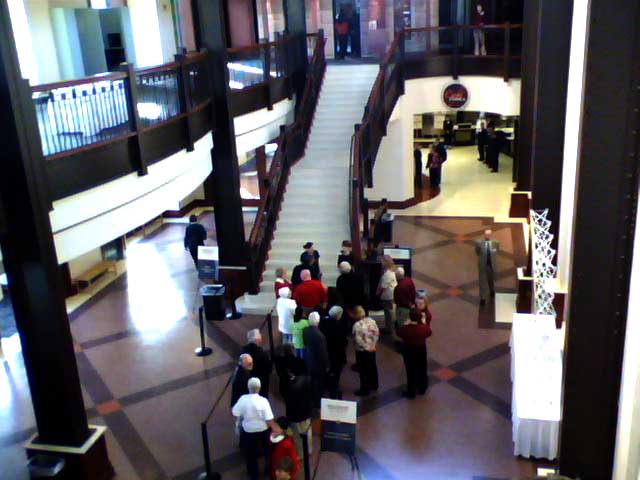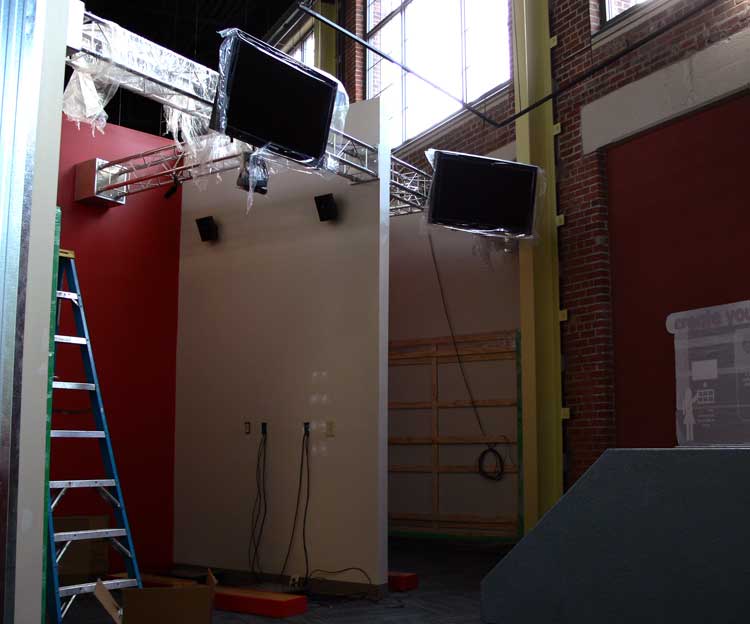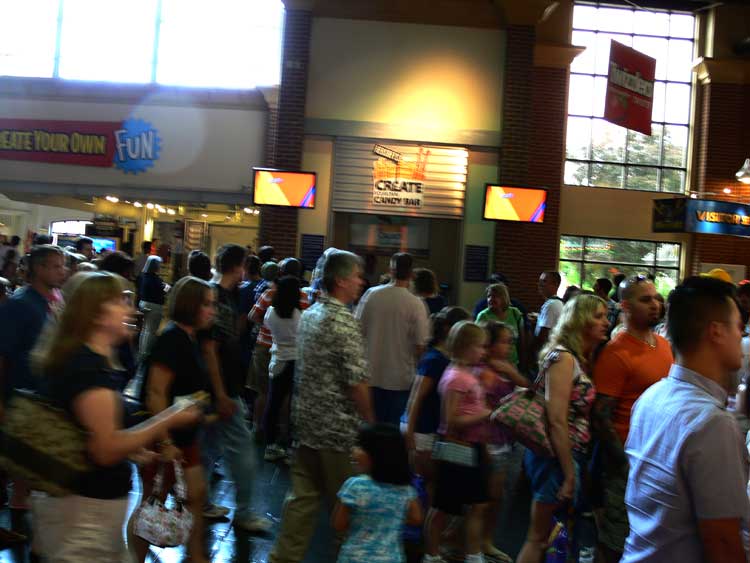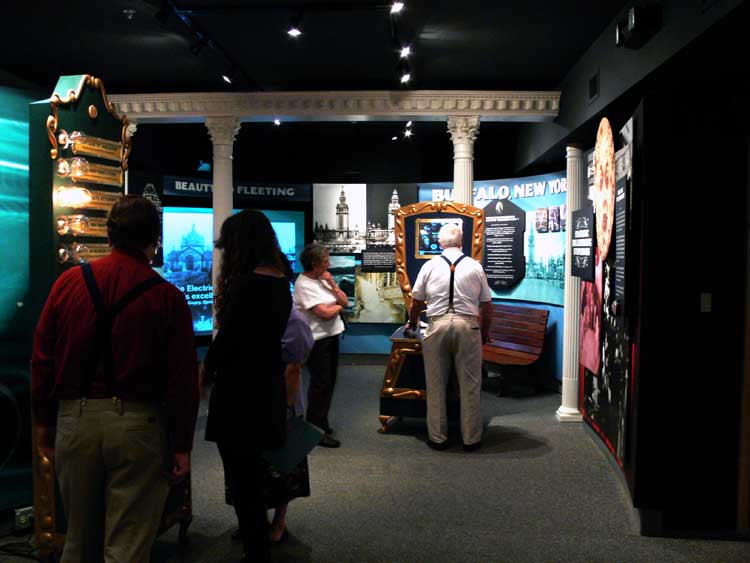
Advice for Building a Museum or Visitor Center
Sat, 21 Jan 2012 14:06:36 EST
I have been really lucky and plagued at the same time to be the last person in line for delivering several exhibits to the general public for facilities ranging in cost from thousands to millions of dollars. As the last person in line I am the person responsible for bringing it all together. I'm not a consultant, I'm not an adviser; I am not a producer. I'm the person responsible for making sure your exhibits work as specified and it doesn't ruin your opening party. I've played the role of making those crazy dreams a reality and I wanted to do my best to provide advice from the front lines on developing original museum dreams from conception to completion.
If any training events are held; ensure the majority of key staff are present. Operating a modern institution with several custom exhibits is sort of like black magic. It requires an understanding of all of the exhibits and their potential failure points. If the exhibits you are building are highly technical in nature then ensure that your staff is ready to support and maintain those exhibits.
Besides just initial training with key staff and contractors; I would suggest then having your own key staff immediately schedule training for staff underneath them. This will not only re-enforce learning for key staff members but also help quickly disseminate critical facility information to all staff members. Usually what has happened in the past with organizations big and small is that key staff members emerge who are comfortable with computers and A/V control systems. That's fine as long as that staff member works 7 days a week and never takes a vacation or switches jobs. Don't let your institution run on black magic by proactively disseminating information early on.
Changes will undoubtedly occur with thirty party services that will break highly technical exhibits if they rely too heavily on them. Resist the urge to solely focus on current trends in technology when developing exhibits. Simple and meaningful ideas can resonate with visitors of all ages and backgrounds without jumping on the trend bandwagon.
Key questions for technical exhibits include:
When building a new institution; I have worked with several exceptional contracting firms across fabrication, A/V and media disciplines. Please don't take this last point that these firms aren't exceptional in their work; just ensure that you have everything you need from them to run a successful institution after they leave the picture.
General Advice For The Exhibit Development Team
I would strongly urge any organization to try their best to assign a smaller working group to exhibit development. When working with media companies and fabricators on developing original exhibits, there are several deliverables and review periods that must be met in a timely manner to make sure your institution opens on time. Assigning a large working group has the tendency to fragment exhibits and delay production. If possible, try to assign small groups of individuals passionate about the exhibits they are helping to make.Opening an Institution
There will be a lot of celebration around your grand opening, but do your best to ensure the exhibits are stable and equipment is solid. If you've developed original exhibits, it is pretty likely that some of them will break. Your best weapon against ensuring the exhibits are addressed in a timely manner is withholding your final payment from hardware, software, and exhibit fabricators. They all have other institutions they are probably going to start on right after yours is finished. Ensure that you hold them to their concepts. If you're interested in the timing of your opening you can check out the other article on Planning the Opening of a Museum or Visitor Center.Collaborating with Fabricators, Media Companies, and Programmers
Depending on the experience of the team you have hired, you may need to take a very active or passive role. Fabricators, media companies, and programmers all may have experience opening several institutions and know what to watch out for. Take into consideration suggestions from the people developing your exhibits. If a fabricator says something won't work; then work with them to find a solution that will. At the same time; if a museum professional says they can't make something work; but you believe it can, then be willing to adjust the schedule and budget to allow prototyping early-on. It's always more of a headache to try and modify an exhibit that doesn't work or breaks once it has already gone into production rather than take the time up front to do it right and test the first time.Tips on Scheduling Fabricators, and A/V Companies
Building a brand new museum or visitor center is an amazing and taxing endeavor. There are an indescribable number of unique challenges that come with each institution. When determining the schedule for your exhibits to be installed; take into consideration your general contractors schedule as well. Fabricators and media companies cannot do anything worthwhile at a facility without power. In my experience, if you make it past the stage where indoor plumbing has been activated and hard hats are no longer required; it is time for fabricators and A/V companies to be brought on site. Anything before that usually means the general contractor is working out the bugs in the facility. You may need to make an exception for A/V companies that require a trip for pulling A/V cable through conduit prior to exhibit installation.Beginning Operations at a new Facility
The opening periods for an institution are particularly difficult. Up to the point of opening your doors, the vision for the institution has been shared by several agencies in a fragmented manner. Dreams and concepts have met reality and you're faced with figuring out how to operate things smoothly day to day. Often times when creating custom solutions; contractors may not provide the level of training and guidance needed to maintain your new facility and all the intricate facets that go along with it.If any training events are held; ensure the majority of key staff are present. Operating a modern institution with several custom exhibits is sort of like black magic. It requires an understanding of all of the exhibits and their potential failure points. If the exhibits you are building are highly technical in nature then ensure that your staff is ready to support and maintain those exhibits.
Besides just initial training with key staff and contractors; I would suggest then having your own key staff immediately schedule training for staff underneath them. This will not only re-enforce learning for key staff members but also help quickly disseminate critical facility information to all staff members. Usually what has happened in the past with organizations big and small is that key staff members emerge who are comfortable with computers and A/V control systems. That's fine as long as that staff member works 7 days a week and never takes a vacation or switches jobs. Don't let your institution run on black magic by proactively disseminating information early on.
Contractors and Exhibits
It is important to realize that all of the exhibits in your institution have been likely made on a contract basis. That means that once things are delivered; it is up to you and your staff to maintain and advance exhibits. Keeping the contractor relationship in mind is paramount. The following are some of the questions I have seen again and again.Fabrication and A/V Equipment
- Do the companies you have chosen to work with provide any type of warranty?
- Are you prepared with the correct information needed to replace key equipment such as projector bulbs? Exhibit work is extremely difficult. At least one piece of equipment is likely to break or wear out in your first year of operation no matter what.
- Have all of the exhibits been fabricated in enclosures that require special keys? Likely many of your fabrication has been done with safety type screws and fasteners.
- Do you have, or have ordered the type of tool required to remove a custom panel or sign?
- Do you know what types of chemicals should be used for cleaning A/V equipment and the custom fabrication? Some common solvents can damage touchscreens as well as paint, plastic, and metal work over time.
- Do you know how to change the media in your presentations? This can come in handy when having special parties or holiday themed events. Most A/V equipment will play media generated by common editing packages such as Adobe Premiere or Final Cut Pro.
Interactive and Computer Based Exhibits
It is important that exhibits that incorporate things like Google Maps, Facebook, Twitter, and social media be developed in such a way that the exhibits can function perfectly without these features. Your institution may last for tens to hundreds of years, but technology changes at a pace that is difficult to keep up with.Changes will undoubtedly occur with thirty party services that will break highly technical exhibits if they rely too heavily on them. Resist the urge to solely focus on current trends in technology when developing exhibits. Simple and meaningful ideas can resonate with visitors of all ages and backgrounds without jumping on the trend bandwagon.
Key questions for technical exhibits include:
- Have you taken the time to extensively explore each exhibit and compare it to your final comments prior to delivery?
- Have all of the revisions been made that you requested?
- Are the exhibits bug free? Have you been able to break any of the applications?
- If configuration options have been added; do you know what all of the configurations do?
- Have you been provided detailed manuals for each exhibit?
- If content management has been provided, do you know how to operate the content management system?
- If the content management system is being actively utilized is it being backed up?
- Do you know how to swap out media in your exhibits? Many developers will include ways to change out media or add new entries to exhibits. A great way to spice things up around holidays or for a special guest or party is to incorporate special media!
- If the exhibit runs on a computer, do you know how to setup the exhibit on an additional computer if need be?
- Have you been provided with all the installation files needed to re-install the exhibit?
Do Not Trust Third Party Providers
This is just a last bit of advice that should apply to all contractors. If you go into an exhibit or institutional project with an expectation of failure; then can prove the opposite by careful planning, real world testing, and keeping on top of your contractors, then you are sure to end up with a successful project! Prove that your exhibits can't break by causing problems with them during testing and address issues as early on as possible.When building a new institution; I have worked with several exceptional contracting firms across fabrication, A/V and media disciplines. Please don't take this last point that these firms aren't exceptional in their work; just ensure that you have everything you need from them to run a successful institution after they leave the picture.

Charles Palen has been involved in the technology sector for several years. His formal education focused on Enterprise Database Administration. He currently works as the principal software architect and manager at Transcending Digital where he can be hired for your next contract project. Charles is a full stack developer who has been on the front lines of small business and enterprise for over 10 years. Charles current expertise covers the areas of human pose estimation models, diffusion models, agentic workflows, .NET, Java, Python, Node.js, Javascript, HTML, and CSS. Charles created Technogumbo in 2008 as a way to share lessons learned while making original products.
Comments
No one has posted any comments yet, be the first
Comments are currently disabled.
